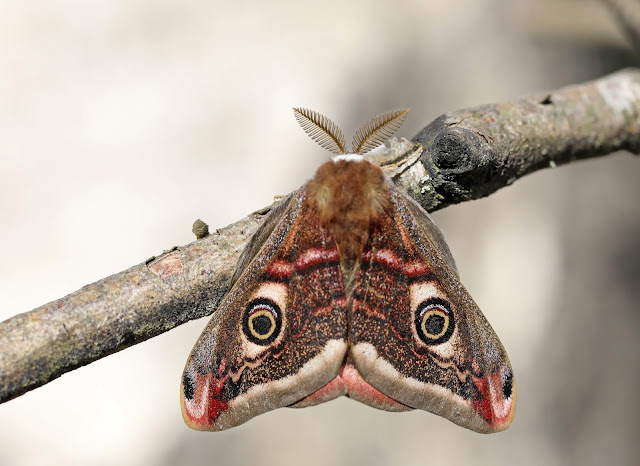This is a bit of a resurrection job as I published this blog several days ago and subsequently spotted an error. I corrected the error pushed the update button and lo and behold the lot disappeared into cyberspace, never to be seen again. Of course no back up so I have to recreate what was after all a small blog.
About this time of year for the past seven years we have made what has become a pilgrimage to Rewell Wood in West Sussex. Primarily to pay homage to that most scarce and beautiful of butterflies - the Pearl-bordered Fritillary, Boloria euphrosyne. I believe the attraction is that this is a butterfly that was "hanging on" when we first started but now, locally, is on the up.
We usually park up in the layby at Fairmile Bottom and take the walk over the hill, of late I am sure the hill is getting steeper. On the way there is great anticipation and discussion, will we find it, who will spot it first? Questions that almost distract you from the sea of blue created by the Bluebells that carpet the woodland floor. This year the season seems a tad late and the blue vista is just emerging.
Arriving at the favoured ride it wasn't long before Martin spotted our first specimen, a male on a mission, not stopping, careering along the ride in search of a mate. Times past there would have been the sight of two elderly butterfliers chasing after each specimen, hell bent on getting the perfect shot. Things are a little more sedate nowadays, we have learned patience and the reward is the satisfaction of gaining some not too shabby record shots. We hung around for a couple of hours and in that time we probably had a dozen butterflies, mostly males, some of which were freshly emerged and preferring to bask in the warm sunshine. Orange Tip, Brimstone, Speckled Wood and Peacock were the supporting cast.
I managed to record a Gooden's Nomad Bee, Nomada goodiana, a wasp mimic that is a kleptoparasite. These are organisms that take over the nest or nest cell of the target host species. The offspring then feed off the food supplies intended for that of the host.
In contrast to the blue of the Bluebells the Common Dog Violets, Viola riviniana and Bugle, Ajuga reptans provide a striking purple hue to the areas that have been recently coppiced. Both plants are important to the PbF, the violet as a larval host plant and the Bugle as a common source of nectar. I couldn't resist recording the violet as it is the county flower of God's Own County - Lincolnshire.
 |
| Taken on a previous visit |
 |
| Ditto |



















